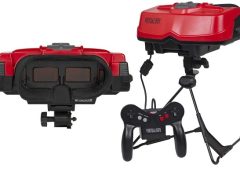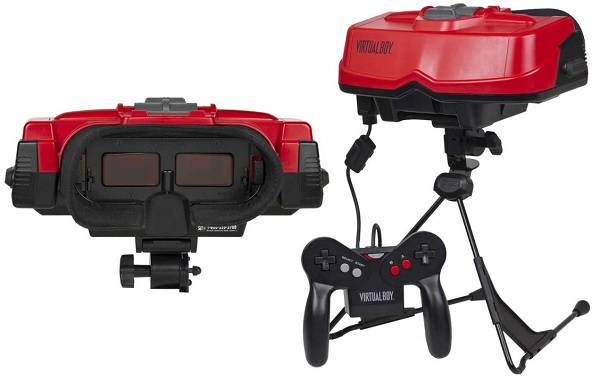
When it comes to the world of VR in 1995 most articles will only mention one system and that was the Nintendo Virtual Boy. But many more headsets were launched this same year and plenty of VR related news which most articles will skip over. This sure was a crazy year with some of the strangest VR headsets (most of which were not capable of VR at all) being launched and there was also some companies folding and a few important mergers as well.
But let’s start with the big news and that was the launch of the Virtual Boy. The Nintendo Virtual Boy (originally known as VR-32) was a 3D gaming console that was hyped to be the first-ever portable console that could display true 3D graphics. It was first released in Japan and North America at a price of $180 but it was a commercial failure despite price drops. The reported reasons for this failure were a lack of colour in graphics (games were in red and black), there was a lack of software support and it was difficult to use the console in a comfortable position. The following year they discontinued its production and sale.
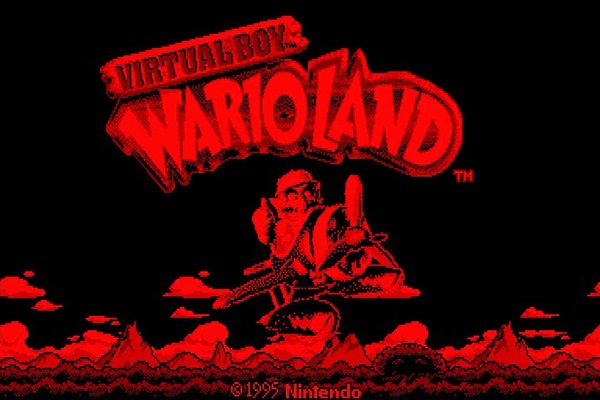
However, development issues also plagued the Virtual Boy. Initial tests of colour LCDs were said to have caused jumpy images, leading to Nintendo retaining the red LEDs that the Virtual Boy was eventually released with. Additionally, the Virtual Boy started as a head-mounted system including tracking. However, with concerns about motion sickness and the risk of developing lazy-eye conditions in children, Nintendo changed the head-mounted system to a tabletop format. Critics panned the system. It was never able to meet sales targets and disappeared from the market within a year.
Some advocates of VR says it was the Virtual Boy that killed VR in the 90’s, but that is simply not the case at all. It was the lack of compelling 3D content and believable environments that killed VR in the 90’s. We now take for granted all the amazing worlds and stories we enjoy in VR but at the time technology simply couldn’t produce them. In fact, the Virtual Boy was only pretending to be a 3D system because all it had was 2D acceleration. It didn’t “kill” VR, it was indicative of the difficulty in bringing VR to the masses during the ’90s.
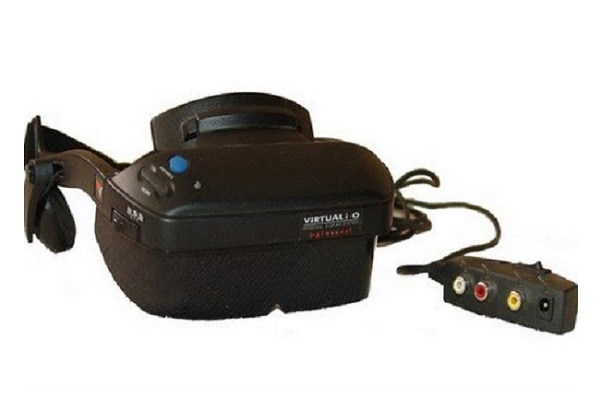
It sure was a year of births and deaths because back in May 1995, Virtual I-O released their own HMD called the Virtual i-glasses. It sold for $499 and the HMD was cheaper and better than the CyberMaxx was launched just a year earlier. VictorMaxx quickly switched gear and released in August 1995 an updated version of the CyberMaxx, called the CyberMaxx 2.0. This version now had 180,000 pixels per display resolution and would now support any devices that use a composite output. To this end, the CyberMaxx was compatible with all game consoles at the time, but not with the benefit of head-tracking. The system was $200 more expensive, with a retail price of $899. Macs support was still missing from this release and would in fact never happen.
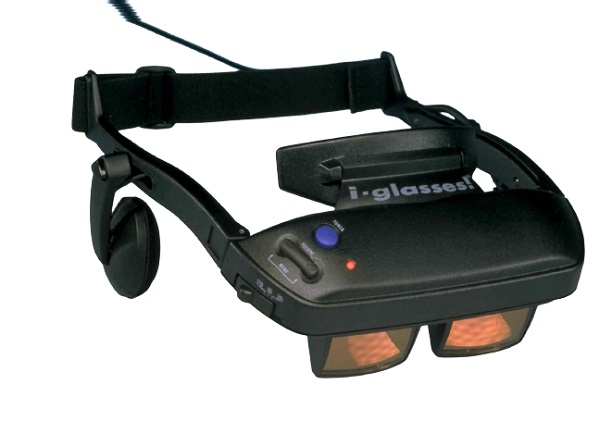
Sadly for VictorMaxx, the release of version 2.0 was not enough to entice customers into buying their HMD. It was now almost twice the price of the Virtual i-glasses and had a slightly inferior screen resolution. With sales of around $670,729 in 1995, the company had failed to sell more than a thousand units in the whole year. In early 1996, the management of the Company concluded that its headset was not likely to gain widespread consumer acceptance in the immediate future at a suggested retail price of $889. In February 1996, the Company suspended production of the CyberMaxx model 2.0 and in March 1996 lowered the price of the CyberMaxx model 2.0 for the purpose of stimulating sales at a suggested retail price of $499. During the second quarter of 1996, it became apparent that the reduced price of the CyberMaxx model 2.0 was not going to stimulate sales and the management of the Company made the decision to cease marketing virtual reality hardware products. The Company liquidated its remaining CyberMaxx inventory and parts and would eventually close down completely in 1998.
Also in 1995, the company Virtuality developed by order of IBM Elysium system for architects, builders and their clients. Virtual reality helped to see what would be the result of the work and later it did spur the start of several important software upgrades that VR badly needed.
There was also the lunch of the 3000 series, which was basically a 2000 Series machine upgraded with a faster processor (Intel Pentium) and a rifle-type controller. Arcades were offered in 2 versions, a “normal” SU-3000 with a generic rifle-type controller and a “Total Recoil” version with an official Winchester Replica Rifle-type controller that featured a CO2-powered blowback mechanism. The “Total recoil” Version came with the game package “Quickshot Carnival” which featured Clay shooting and other target practice. The “normal” generic-rifle version came with the game “Zero Hour”, which was a first-person shooter “on rails” that was tailor-made for the gun controller.
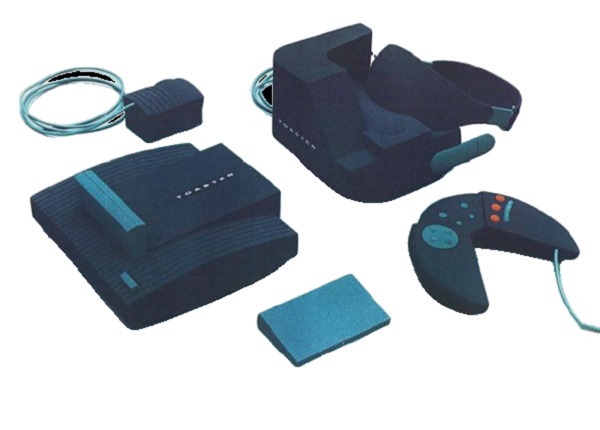
Someone else who jumped into the VR ring was Hasbro with a toaster! The toy manufacturer had missed out on the console booms of the 80s and 90s and wanted to get into what seemed like a very lucrative market. They designed a CD-ROM-based system powerful enough to run VR and built a VR prototype. After a great deal of money was invested, the system was sadly never released, though the game Night Trap was built for the system. As the game was so expensive to produce, the developers salvaged what they could and released it for the Sega CD system instead.
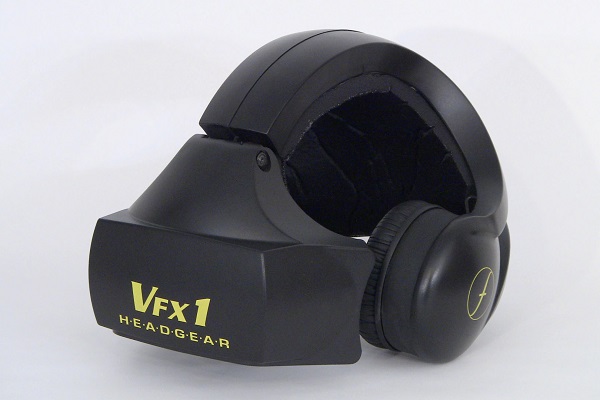
Also in this very same year, the VFX1 Headgear was released by Forte. To illustrate the marketing campaign for Forte Technology’s VFX1 headset the company hired a hip-looking fellow in skintight bronze pants to wander the streets of what looks like Germany, or perhaps London, and crouch and make weird gesticulations. Traumatized passers-by still wonder what they saw that day. Later, Forte also hired a model to wear silver spandex and act as a VR scarecrow, scaring away many potential customers during a rock video shoot.
Yep, 1995 sure was a crazy year and the VR madness doesn’t stop there, find out what NASA and a few other well-known companies were up to on 1995 part 2.
